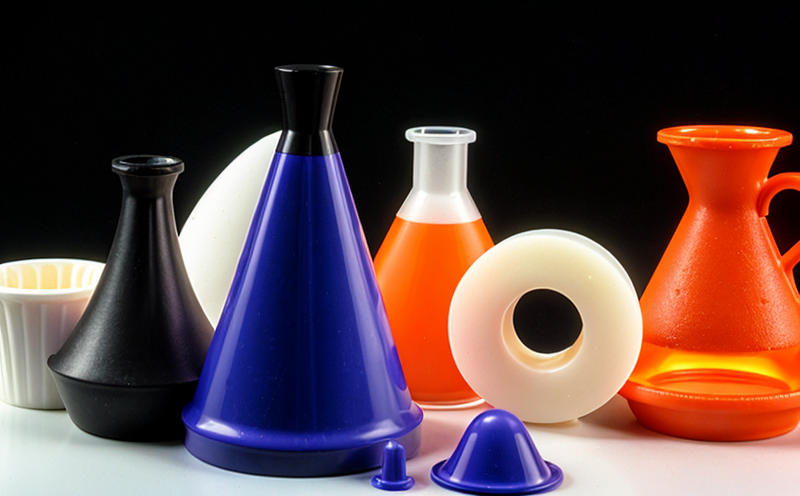Catalyst Residue Testing in Polymers
The presence of catalyst residues in polymers can have significant implications on product performance and quality. Catalysts used in polymerization processes are often challenging to remove completely, leading to trace amounts remaining within the final product. These residues can affect physical properties such as strength, elasticity, and thermal stability. Accurate detection and quantification of these residues through catalyst residue testing is crucial for ensuring compliance with industry standards and maintaining product integrity.
At our laboratory, we employ advanced analytical techniques tailored specifically to identify even trace amounts of catalyst residues in polymers. Our team uses a combination of spectroscopic methods including Infrared (IR) Spectroscopy, Raman Spectroscopy, and Nuclear Magnetic Resonance (NMR) to analyze samples. These methods provide detailed molecular information that helps us pinpoint the presence and concentration of any residual catalysts.
The testing process begins with meticulous sample preparation which involves degassing the polymer matrix followed by extraction using appropriate solvents if necessary. Once prepared, the samples undergo rigorous analysis under controlled conditions. The results generated from these analyses are then cross-verified against international standards such as ISO 17295:2016 and ASTM D825 to ensure reliability.
Our experienced technicians interpret the data accurately and provide comprehensive reports detailing the findings along with recommendations for process optimization if required. This service not only aids in meeting regulatory requirements but also supports ongoing quality control initiatives by providing insights into potential areas of improvement within manufacturing processes.
In summary, our catalyst residue testing ensures that your products meet both internal specifications as well as external regulations while enhancing overall product reliability and customer satisfaction.
Benefits
The importance of conducting catalyst residue testing in polymers cannot be overstated. By performing this analysis regularly, businesses can ensure they are producing high-quality materials that meet all necessary standards and expectations. This proactive approach helps prevent costly recalls or lawsuits due to non-compliance issues down the line.
Additionally, regular monitoring allows companies to identify trends early on which could indicate inefficiencies in their production processes. Such information is invaluable for continuous improvement efforts aimed at reducing waste and improving efficiency throughout the supply chain.
For research & development teams working on new formulations or modifications, understanding how much catalyst residue remains after production can guide future developments towards more sustainable practices that minimize environmental impact without sacrificing product quality.
Compliance officers will find value in having this service available as it provides assurance regarding adherence to relevant regulations and industry best practices. It also supports efforts aimed at maintaining a positive reputation among stakeholders including customers, investors, and regulatory bodies.
Industry Applications
Catalyst residue testing finds application across various sectors where polymers play a crucial role in manufacturing processes. In the plastics industry, this service ensures that all grades of plastic films, pipes, containers, etc., comply with specified limits for residual catalysts. This is particularly important when dealing with food contact materials since even trace amounts of certain catalyst residues could pose health risks.
In the automotive sector, where lightweight components are increasingly preferred to improve fuel efficiency and reduce emissions, accurate determination of catalyst residues ensures that these parts maintain their desired mechanical properties throughout their lifecycle.
For pharmaceutical manufacturers who rely heavily on polymers for drug delivery systems or packaging solutions, ensuring low levels of residual catalysts is essential not only from a safety perspective but also because it affects how the active ingredients interact with the polymer matrix during storage and distribution.
Use Cases and Application Examples
In a case study conducted for a major consumer goods company, our laboratory detected unexpected levels of catalyst residues in newly manufactured polyethylene terephthalate (PET) bottles. Upon further investigation using advanced analytical techniques like NMR spectroscopy, it was found that the issue stemmed from an improperly cleaned reactor used during production.
This discovery enabled the manufacturer to address the root cause immediately by implementing stricter cleaning protocols for all reactors used in PET bottle manufacturing lines. As a result, subsequent batches produced met the desired specifications without any detectable catalyst residues.
A second example involves a specialty chemicals firm developing new polyurethane foams intended for use in insulation products. During early-stage testing phases, our lab identified traces of tin-based catalysts which had not been completely removed despite extensive purification steps during synthesis. Understanding these findings allowed the company to refine their purification methods resulting in higher purity materials suitable for enhanced performance properties.





